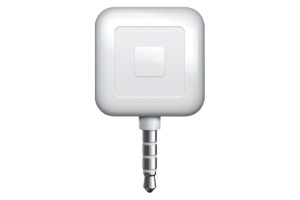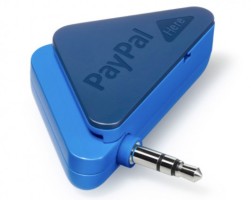 Every time I see 2.9% shaved off the top of a PayPal payment I grit my teeth.
Every time I see 2.9% shaved off the top of a PayPal payment I grit my teeth.
There have been endless VO forum threads about this, and a vast majority say they just write this off as the cost of doing business. They claim the charge on their yearly tax return as a transaction fee.
Maybe so, but then what about a vendor who demands you send them the full payment, and that means YOU pay the PayPal fee on YOUR end? With that scenario, you get dinged on both sides of the transactions you’re doing with PayPal.
Apparently most VO’s are unwilling to demand from their clients the full amount…again, TCODB (the cost of doing business) is that you get paid faster and reliably. PayPal justifies it this way: “…that’s a small price to pay [2.9% + .30 transaction fee per sale], for accepting all forms of payment from over 169 million customers worldwide..”
Maybe so, but my teeth still hurt from bruxation.
Most of us just want to make it easy for our clients. What about accepting Credit Cards? Again, PayPal’s solution seems the easiest. Just give your PayPal email address to your client, and even if they are NOT on PayPal (who would that be?) they can still pay you, and PayPal just got a new customer (your client) and PayPal got their 2.9%, and the Credit Card company got THEIR percentage too.
Honestly, I just tell my clients I would prefer a check in the mail. Rarely do I get an argument or grumbling with that request. You have to wait a few more days, but the US Post office is still pretty reliable. And now, you can make mobile deposits using your smartphone, so there are fewer visits to the bank.
Now that I have more and more international clients, though…even that gets to be a thorny issue with banks.
Many of those foreign clients (and some domestic clients, too) are working with me to transfer money directly to my bank account. It requires some advance paperwork, but can be quick and painless (translated, I don’t see any transaction fees on my end). A good many of those clients in other countries also now have PayPal (I still prefer bank transfer).
Let’s face it, transacting money COSTS money. But like most other sectors of our society, competitive smartphone-based apps are making such transactions less costly, and much easier.
DIGITAL OPTIONS
SQUARE
When I began selling my book (More Than Just a Voice, The REAL Secret to Voiceover Success), I signed up for SQUARE. Uber-simple and reliable. I liked it when I was selling books in person at conferences, ’cause it comes with an iOS app, and an  attendant square card reader…just plug it into the headphone jack of your phone, slide the card, and then have the customer sign on the phone. Once you connect to your bank, all transactions amounts are transferred there, the buyer gets an email receipt, and I can go online any time to get reports. I can take credit card payments over the phone from Square without the client needing to sign. As easy as it is, Square’s processing fees are 2.75% per swipe, online sale, or paid Square Invoice and 3.5% + 15¢ per manually entered transaction. Only marginally better than PayPal.
attendant square card reader…just plug it into the headphone jack of your phone, slide the card, and then have the customer sign on the phone. Once you connect to your bank, all transactions amounts are transferred there, the buyer gets an email receipt, and I can go online any time to get reports. I can take credit card payments over the phone from Square without the client needing to sign. As easy as it is, Square’s processing fees are 2.75% per swipe, online sale, or paid Square Invoice and 3.5% + 15¢ per manually entered transaction. Only marginally better than PayPal.
PAYPAL HERE
Not to be outdone, PayPal got into the same space as Square real quick. Same thing. It comes with a similar card reader, and lets you make transactions in person with your smartphone. You can also take credit card payments on the phone, and make the usual withdrawals from your PayPal account to your bank. PayPal Here charges 2.7% per swipe. Keyed transactions 3.5% +  $0.15: Manually enter a card number or scan a card, at a 3.5% transaction fee plus $0.15. The PayPal Here app is available on iOS, Android, and Windows devices. You get all the benefits of a PayPal account, too. Hey, these guys are first in this space, and that’s no small thing when you need to make a challenge to a transaction that’s gone bad.
$0.15: Manually enter a card number or scan a card, at a 3.5% transaction fee plus $0.15. The PayPal Here app is available on iOS, Android, and Windows devices. You get all the benefits of a PayPal account, too. Hey, these guys are first in this space, and that’s no small thing when you need to make a challenge to a transaction that’s gone bad.
VENMO
‘Whole new paradigm, but same general concept. Venmo began as an easy way for friends to split costs on restaurant tabs, but now it’s grown beyond. My college junior daughter schooled me on one of my visits to see her. She uses it as an app on her iPhone to split utility costs with her roomates. Venmo asks that you link your account to a bank debit card. When you pay someone, the money gets transferred from your checking account to the receiver’s account. Similarly, when you receive money it comes into the checking account you identified to Venmo, from the sender’s bank account. Because of this sort of transfer, there is no fee associated. Just send a message from your phone requesting a payment or send money, and your receiver will be notified. Caveat: both ends of the transaction must be registered and set up with Venmo.
SQUARE CASH
In this case, it was Square who was not going to be outdone by Venmo, and launched an attending service that looks and acts a lot the same with some notable exceptions. Square cash also depends you connecting to an established checking account. You can request payments from clients for your VO services for a 1.9% transaction fee. That’s more than Venmo, but most payments come through almost immediately, and the other person (whether sender or receiver) does NOT have to have an account – they pay you through a website. You create what they all a $CashTag (it’s pretty easy), and you can send that tag to anyone to click on and pay you.
I’m sure there are other options I’ve not heard of yet. If they digital payment option you use is not in this article (Google Wallet? Apple Passport?), let us know by adding it to the comments below?
CourVO

